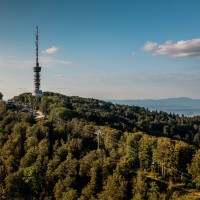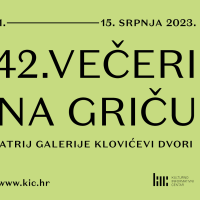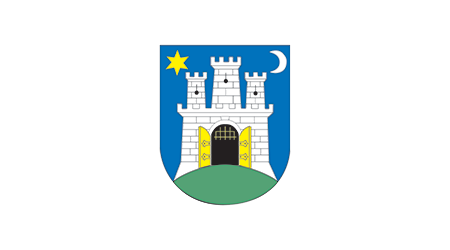Preparations for the 120th Anniversary Underway
The Botanical Garden of Zagreb is a monument of garden architecture protected under the law for its educational role and exceptional cultural and historical value. Next year, the Botanical Garden will mark the 120th anniversary of its existence.
 The Botanical Garden is one of the features of the so-called Lenuci’s horseshoe, a string of green areas, parks and promenades which compose the monumental framework of Zagreb’s Lower Town. Next year, the Garden will mark the 120th anniversary of its existence. It was opened to visitors back in 1899 as a landscape garden with free standing groups of trees, meandering pathways and floral surfaces of strict symmetric lines. Its affiliation to the University and the School of Natural Sciences and Mathematics has awarded it with both cultural and educational value to which tourist valorization has been added over the past several decades. Because of its exceptional cultural and historical value, the park was declared by law as a monument of garden architecture.
The Botanical Garden is one of the features of the so-called Lenuci’s horseshoe, a string of green areas, parks and promenades which compose the monumental framework of Zagreb’s Lower Town. Next year, the Garden will mark the 120th anniversary of its existence. It was opened to visitors back in 1899 as a landscape garden with free standing groups of trees, meandering pathways and floral surfaces of strict symmetric lines. Its affiliation to the University and the School of Natural Sciences and Mathematics has awarded it with both cultural and educational value to which tourist valorization has been added over the past several decades. Because of its exceptional cultural and historical value, the park was declared by law as a monument of garden architecture.
The Botanical Garden is home to quite an impressive number of different plant species, some of which are very rare. Its main features are an arboretum, a floral parterre, fourteen glasshouses, three rockeries and two man-made lakes. The last has provided inspiration to a number of famous Croatian painters. The great watercolorist, Slava Raškaj, was one of them. Some of her paintings from the “Water lilies” series, ranked among the masterpieces of Croatian turn-of-the 19th century art, were created by those two lakes.
The Botanical Garden also features several architectural highlights: the art-nouveau administration building, the building of the Botanical Institute and the exhibition pavilion from 1891 which was completely renovated last year.
The total surface of the garden is 4.7 hectares, with the arboretum, landscaped as an English-style park, taking up most of its grounds. All the plants grown in the garden make part of its plant collection, which is divided into several different groups and boasts many autochthonous species.
The Botanical Garden is open to visitors until the 1st of November and the entrance is free of charge.
Published: 01.09.2008
 Hrvatski
Hrvatski English
English Deutsch
Deutsch Spanish
Spanish French
French Italian
Italian Russian
Russian Korean
Korean Japanese
Japanese Chinese
Chinese The Botanical Garden is one of the features of the so-called Lenuci’s horseshoe, a string of green areas, parks and promenades which compose the monumental framework of Zagreb’s Lower Town. Next year, the Garden will mark the 120th anniversary of its existence. It was opened to visitors back in 1899 as a landscape garden with free standing groups of trees, meandering pathways and floral surfaces of strict symmetric lines. Its affiliation to the University and the School of Natural Sciences and Mathematics has awarded it with both cultural and educational value to which tourist valorization has been added over the past several decades. Because of its exceptional cultural and historical value, the park was declared by law as a monument of garden architecture.
The Botanical Garden is one of the features of the so-called Lenuci’s horseshoe, a string of green areas, parks and promenades which compose the monumental framework of Zagreb’s Lower Town. Next year, the Garden will mark the 120th anniversary of its existence. It was opened to visitors back in 1899 as a landscape garden with free standing groups of trees, meandering pathways and floral surfaces of strict symmetric lines. Its affiliation to the University and the School of Natural Sciences and Mathematics has awarded it with both cultural and educational value to which tourist valorization has been added over the past several decades. Because of its exceptional cultural and historical value, the park was declared by law as a monument of garden architecture. 









